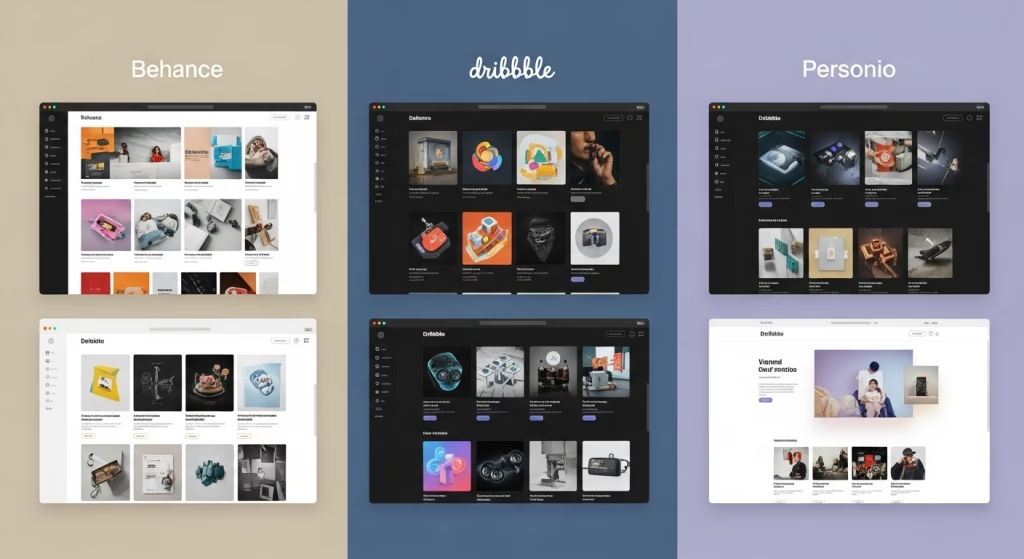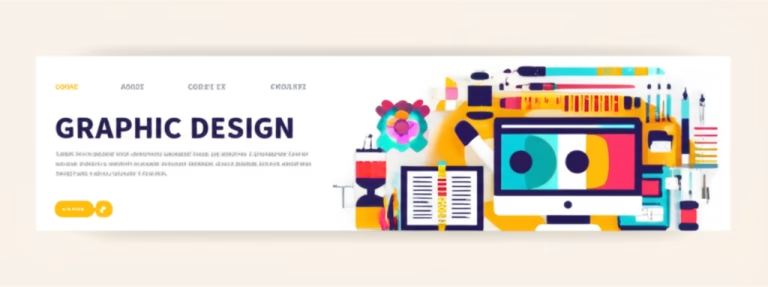Your Roadmap to Building an Impactful Portfolio and Securing Your First Design Opportunity.
Are you dreaming of a vibrant career in graphic, web, or visual design, but feel stuck because you lack a professional portfolio? Many aspiring designers face this exact challenge: “How can I get a first design job if I don’t have any real projects to show?” It’s a common dilemma, and one that often discourages talented individuals before they even begin. But here’s the truth: you absolutely can build a compelling portfolio and launch your design career, even with zero traditional experience.
This article is your practical guide to overcoming that initial hurdle. We’ll show you how to craft a portfolio that not only showcases your potential but also helps you land your first clients or secure that entry-level position. Forget the myth that you need years of experience; what you need is a strategic approach to demonstrating your skills and passion. Let’s dive into how you can build a portfolio that truly stands out.
Table of Contents
What is a Design Portfolio and Why is it Essential?
Think of your design portfolio not just as a collection of pretty pictures, but as your professional story. It’s the primary tool potential employers or clients use to assess your skills, aesthetic, and problem-solving abilities. For someone seeking a first design job, your portfolio isn’t just a bonus; it’s often the only thing that speaks for you before an interview. It demonstrates your understanding of design principles, your creative process, and your ability to deliver tangible results.
A strong portfolio acts as concrete proof of your capabilities. It answers the question, “Can this person do the job?” without you having to say a word. It’s your visual resume, your sales pitch, and your creative identity all rolled into one. Without it, breaking into the competitive design industry, especially for entry-level design jobs, becomes significantly more challenging. It’s about showing, not just telling, what you can do.
Building Your Portfolio from Scratch: Even Without Clients
This is where many beginners get stuck. If you haven’t worked for clients, how do you fill a portfolio? The answer lies in proactive creation and strategic presentation. You don’t need paid projects to demonstrate your talent; you need well-executed projects that highlight your design thinking and skills.
Create Impactful Simulated Projects
Simulated projects are your best friend when you’re just starting out. These are self-initiated projects where you define the brief, execute the design, and present the solution as if it were for a real client. This approach allows you to control the scope and showcase exactly the kind of work you want to attract for your creative career entry.
- Redesign Existing Brands or Websites: Pick a well-known brand or website and identify areas for improvement. Then, redesign their logo, website, app interface, or marketing materials. Explain your rationale and process behind the changes.
- Fictional Client Projects: Invent a fictional company or organization and create a complete branding package for them—logo, color palette, typography, stationery, and even mockups of how their brand would look in real-world applications.
- Personal Passion Projects: Design something purely for your own interest. This could be illustrations, a custom font, a concept for a social media campaign, or even a personal website. These projects often show your unique style and passion.
Focus on Quality Over Quantity
It’s a common misconception that more projects equal a better portfolio. For your first design job, aim for quality over quantity. Select your absolute best 3-5 projects that are relevant to the type of work you want to do. Each piece should be meticulously crafted and presented. A few strong, well-documented projects are far more impressive than a large collection of mediocre ones.
Showcase Your Design Process
Don’t just show the final design. Employers want to understand *how* you think and solve problems. For each project, include a brief case study that explains:
- The problem you were trying to solve.
- Your research and ideation process (sketches, mood boards, wireframes).
- The tools and techniques you used.
- Your design decisions and rationale.
- The final solution and its impact.
This demonstrates your ability to think critically and strategically, crucial for any design industry opportunities.
Choose the Right Platform for Your Portfolio
Where you host your portfolio matters. Consider these popular options:
- Behance: Excellent for showcasing a wide range of creative work, with good community features.
- Dribbble: Ideal for quick shots of UI/UX, illustration, and graphic design, great for visibility.
- Personal Website: Offers the most control over branding and presentation. Platforms like Webflow, Squarespace, or even a custom WordPress site can be used. This is highly recommended as you progress in your creative career entry.

Ensure your chosen platform is easy to navigate, mobile-friendly, and visually appealing. The platform itself should reflect your design sensibilities.
Organize Your Work for Clarity and Impact
Make it easy for recruiters and potential clients to find what they’re looking for. Categorize your projects if you have diverse work (e.g., “Branding,” “Web Design,” “Illustration”). Use clear, concise titles and compelling visuals. Your portfolio should have a logical flow that guides the viewer through your best work.
Positioning Yourself for Your First Client or Role
Building a great portfolio is only half the battle. The next step is effectively positioning yourself to secure that first design job or client. This involves understanding who you want to work for and how to present yourself authentically.
Identify Your Niche and Ideal Client
Even as a beginner, having a clear idea of the type of design work you enjoy most and the kind of clients or companies you want to work with can be incredibly beneficial. Do you love branding for small businesses? UI/UX for tech startups? Illustration for children’s books? Specializing, even loosely, can help you tailor your portfolio and outreach efforts, making your job search for designers more targeted and effective.
Crafting Your Personal Brand
Your personal brand is how you present yourself to the world. This includes your online presence (LinkedIn, social media), your resume, and how you communicate. Ensure consistency across all platforms. A professional and cohesive personal brand reinforces your credibility and makes you memorable. Your personal brand should subtly hint at your design style and professionalism, crucial for anyone looking for entry-level design jobs.
Networking and Outreach Strategies
Don’t wait for opportunities to come to you. Actively seek them out:
- Online Communities: Join design forums, Facebook groups, and LinkedIn groups. Engage in discussions, ask questions, and share your insights.
- Local Meetups: Attend design events, workshops, and conferences (even virtual ones). Networking can open doors to mentorships and job leads.
- Cold Outreach: Don’t be afraid to send polite, personalized emails to design agencies or companies whose work you admire. Briefly introduce yourself, explain why you’re interested, and include a link to your portfolio.
Presenting Your Portfolio in Interviews
When you get an interview, be prepared to talk through your portfolio projects. Don’t just point and describe; tell the story behind each project. Explain your thought process, the challenges you faced, and how you overcame them. Demonstrate enthusiasm and a willingness to learn. This is your chance to show your personality and passion beyond the visuals.
Your Journey to a Successful Design Career Starts Now
Landing your first design job or client without prior experience might seem daunting, but it’s entirely achievable with the right strategy. By focusing on creating a strong portfolio of simulated projects, understanding your unique value, and actively positioning yourself in the market, you’re not just waiting for opportunities—you’re creating them.
Remember, every successful designer started somewhere. Your passion, dedication, and a well-crafted portfolio are your most powerful assets. Embrace the learning process, seek feedback, and never stop honing your skills. The design world is vast and full of design industry opportunities for those willing to put in the work. Go out there and make your mark!



